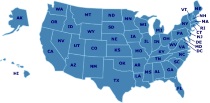Westward Expansion
Things to See & Do in Wyoming
Mormon Pioneer National Historic Trail
Fort Laramie National Historic Site
Grand Encampment Museum
Old West Books
Phone: 719-260-6030
Email: info@oldwestbooks.com
Old West Books has been in business since 1997 and specializes in books on the American West, Custer, military, Civil War, Indian Wars, cowboys, cattle industry, fur trade, Lewis and Clark, travel and exploration. They stock a mix of rare out-of-print books and new titles. Books are shown by appointment only. Books may also be bought via the Internet, catalogs, and book shows.
Fort Caspar Museum and Historic Site
Oregon National Historic Trail
Cheyenne Frontier Days™ Old West Museum
Crook County Museum & Art Gallery
Pony Express National Historic Trail
Mormon Handcart Historic Site at Martin's Cove
Uinta County Museum
California National Historic Trail
Featured Resources
As an Amazon Associate, we earn from qualifying purchases. We get commissions for purchases made through links on this site.


